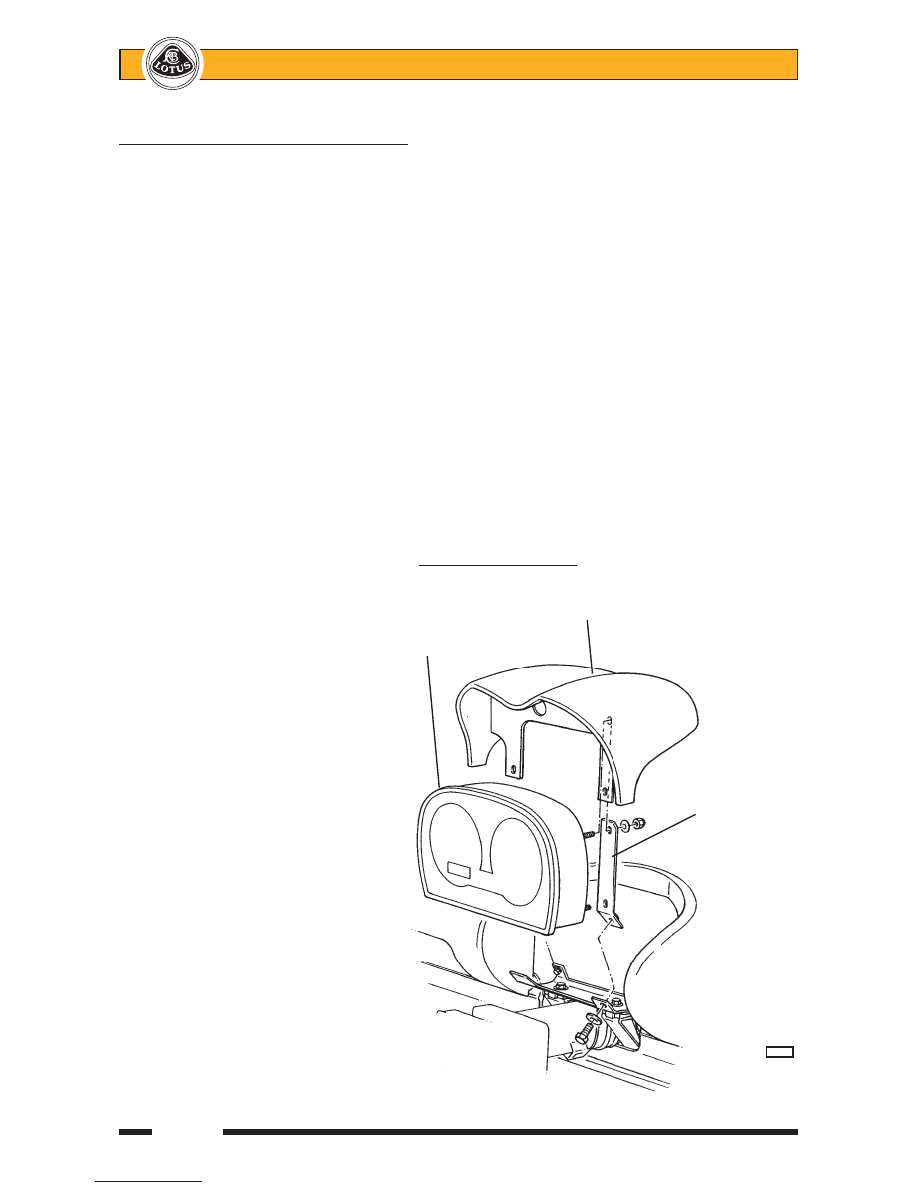Lotus Elise / Lotus Exige. Manual - part 53

Lotus Service Notes Section HG
Page 8
To Remove Upper Steering Column Assembly
WARNING: On cars so equipped, the driver's airbag is housed in the hub of the steering wheel.
Precautions need to be taken for personal safety when working with airbags and associated
componentry. Do not attempt to remove the airbag, steering wheel or column without first referring to
section WD.
1.
Disconnect the battery, and remove the column shrouds (see sub-section HG.2).
2.
Disconnect the column lever switches, or release the retaining pawls and slide the switches out of the
carrier. Disconnect the horn contact pin. On airbag equipped cars, refer to section WD and unplug the
yellow airbag harness connector.
3.
To disconnect the ignition switch: prise open the terminal cover, and use a small screwdriver to release
the retaining barb located between the white and yellow cables. Withdraw the connector.
4.
If necessary, remove the steering lock/ignition key barrel: Turn the key to position 'I', depress the spring
pin accessible via a hole in the column switch carrier, and withdraw the lock barrel.
5.
If necessary, remove the ignition switch: First remove the steering lock/ignition key barrel (see above).
Remove the retaining grub screw and withdraw the switch.
6.
If necessary, remove the steering lock assembly: Remove the spline head screw securing the column
switch carrier, and drill or chisel out the two shear head bolts fixing the lock assembly to the column.
7.
Remove the pinch bolt securing
the upper universal joint to the in-
termediate column.
8.
On non-airbag cars, remove the
two fixings for the instrument pack
mounting brackets, and remove
the instrument pack and cowl as-
sembly after unplugging the sin-
gle harness connector.
On airbag equipped cars, with-
draw the instrument surround and
cowl straight rearwards from the
dash panel to release the spring
clips. Remove four screws to re-
lease the instrument pack mount-
ing bracket from the dash and
unplug the two harness connec-
tors
9.
Release the two bolts securing the
upper column clamp to the dash
brackets, and remove the switch
pack.
10.
From the access provided by the
removal of the switch pack, re-
lease the upper column single
lower fixing and withdraw the col-
umn assembly from the scuttle
and off the intermediate steering
column.
Non-airbag type shown
Instrument cowl
Instrument
pack
Instrument
& cowl
mounting
bracket
b259a